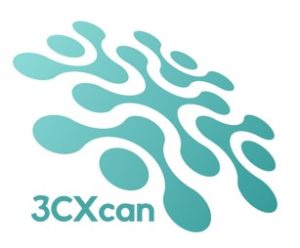Performance appraisal or performance management are one thing. Forced ranking into an artificial normal distribution of people in the organization, is another thing. A Bell Curve/normal distribution of performance is still used in many organizations. In this way of thinking (and it is a way of thinking) a majority of people will fall into the category of (average) contributors and, then, there will be minorities on one side (excellent performance, get the big bonus), and on the other side (under performing, on the way out). I am talking in caricature, but anybody working in a medium to large organization will recognise this annual ritual, usually led by HR in order to ‘classify people’s performance’. Historically, it’s gone as far as telling managers, ‘you must have so many in the mean area, so many in one standard deviation, so many in 2 etc’. It was a ‘you must have’, not a ‘what do you have?’.
HR, and I am not directing the shots at the function only, but also to leadership of organizations, (we are all HR) needed tools to classify people and trigger professional development, pay increases, bonuses etc. So it has used for many years an intuitive and ‘logic’ tool, which has become ubiquitous.
However, the Bell Curve distribution in organizations is the wrong distribution for almost anything, even from a simple mathematical or statistical perspective. It is as irrelevant to organizations as it would be to supermarkets in order to explain the stock on its shelves. This is why.
The organization is a social network of connections. Bell Curves and social networks are as suited to each other as oil and water. Most distributions in a network are not ‘normal’ but follow a Power Law/logarithmic one. In a Power Law distribution, a few have a lot of (head), and most have few of (long tail). Translation: a relatively small number of people have high connectivity and influence, for example; a relatively large number of people have low connectivity and influence. It works for connectivity on the web (relatively few sites, compared with the huge total, enjoy high connectivity; most sites enjoy low connectivity, as compared with the total) and in any social network (scale free, is the technical level) The organization IS a social network in which many dynamics, from connectivity to power, follow Power Law principles.
You may think that this can explain connectivity and influence (see my books [1]Viral Change™ and Homo Imitans) but not necessarily performance. But the only reason why we think this way is because nobody has seriously thought about Power Law and performance. It is however logical that the distribution of ‘performance’ (which after all is not a single ‘measure’) follows the same rules as other true social network distributions. So imagine a top of 100 and bottom of 0 and anything in between in a power law/logarithmic distribution/curve. This is a much better representation.
Trouble is, we are so used to Bell. The entire IQ system is based upon 100 being normal, 140 a genius and 60 a handicap. But this was a mathematical construct.
An additional problem is that HR/Bell/Forced ranking is heavily biased towards operational outcomes (read: hitting targets) and usually it says zero about other things such as connectivity, influence (positive or negative), positive deviance, experience, overall ‘market value’ etc. You are going to tell me that Performance Management includes not only operational outcomes but also values and soft stuff. I see, ‘Performance’ is then a conglomerate. When you give conglomerates a number (and a position in a curve) you risk falling into the phenomenon that I call ‘Sumville’. ‘This is a hypothetical town with a sign at its entrance: ‘Welcome to Sumville; population 2500, 5 hotels, 20 pubs, 3 churches, 200 sheep, total 2728’. For the record, Sumville is my invention but I have seen that sign.
None of my (serious) clients use Bell/Force ranking anymore. It is an artificial distribution. A broader problem however is a similarly artificial competence system, but this is a story for another day.
People’s classifications are here to stay. It is our nature to frame things (reality, concepts, people) and make sense of them. But many of our toolkits are old. The Bell Curve applied to people performance creates more problems (including motivation and a high potential for unfairness) that it tries to solve. It is a convenient management tool, in 2020 only justifiable to provide convenience to management.
________________________________________________________________________________________________
‘The organization IS a social network in which many dynamics, from connectivity to power, follow Power Law principles…Bell Curves and social networks are as suited to each other as oil and water.‘
Do you know your REAL organization?
The organization chart tells you who reports to whom but not much else. But, who is truly connected with whom?
For many years the need to understand formal and informal connections in organizations has been well understood. Now, we have turned organizational network science into real practice: we uncover your networks with no pain, efficiently, fast and with absolute confidentiality.
We can help you identify those channels.

3CXcan [2] provides a diagnosis of your formal and informal connections
3CXcan is an online survey which uses organizational network science software called Cfinder Algorithm, a tool for social network detection, to give you a profound understanding of your internal networks. With this data you can built effective solutions for your organizational challenges. It is a diagnostic tool which:
◦ Provides a picture: of the formal and informal organization and how effectively both operate.
◦ Reveals: organizational connections from strong to weak, to ineffective and broken connection.
◦ Gains insight: on the specific solutions and interventions required.
◦ Identifies: the individuals that will leverage change more effectively (ie champions).
Note:
- This process is totally anonymous.
- No names are ever revealed (unless there is a specific agreement)
- The data base of findings is erased soon after the debriefing has taken place
To find out what the results from this process look like and how it can help your business – find out more. [2]
For a free virtual consultation or a short walk through our demo – contact us now.; [3]